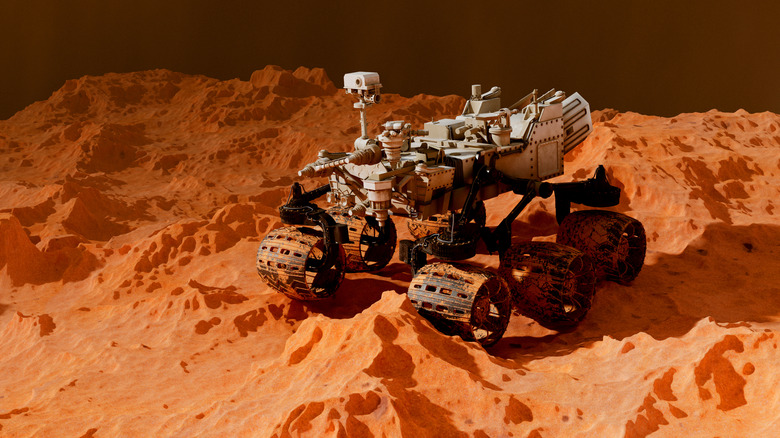How The Sun Prevents NASA From Communicating With Its Mars Robots
Missions to Mars have been a priority for NASA and other national space agencies, as well as a stated focus of private space exploration companies in recent years. NASA's efforts have included using several robotic rovers, including Spirit, Opportunity, and Curiosity. These intricate remote-operated machines send back high-resolution photographs and video along with valuable scientific data that help NASA scientists learn more about the red planet in preparation for future visits to one of Earth's nearest neighbors in our solar system.
The rovers on Mars and the orbiters that relay data back to Earth rely on the sun's light for energy. However, the position of the sun and Earth occasionally means there must be a pause in the activity of the rovers. This lasts about two weeks while the three celestial bodies are in a specific arrangement relative to each other — a phenomenon known as Mars solar conjunction. Solar conjunction happens about once every two years and means that the Earth and Mars are in orbit with the sun between them.
This year's solar conjunction lasts exactly two weeks
While the sun is between Earth and Mars, signals sent from NASA to the rovers and orbiters could be interrupted or otherwise disturbed, potentially damaging the delicate and expensive equipment. This video from NASA's Jet Propulsion Laboratory explains how scientists plan for solar conjunction by sending enough instructions in advance to keep the rovers busy during the phenomenon. Any data gathered during the break is stored for transmission once the sun is out of the way. This particular conjunction began on November 11 and will last until November 25.
Solar conjunction also allows NASA's busy scientists some much-needed downtime. NASA's website explains how staff handles the critical period. "Engineers have become skilled at letting spacecraft be on their own. Before solar conjunction, the mission team sends up any necessary commands. Many then consider it an opportune time to take a few well-deserved vacation days."
The timing of this particular solar conjunction will also allow NASA staffers to spend Thanksgiving at home with their families instead of huddled at computer monitors, poring through data sent from more than 235 million miles away.
